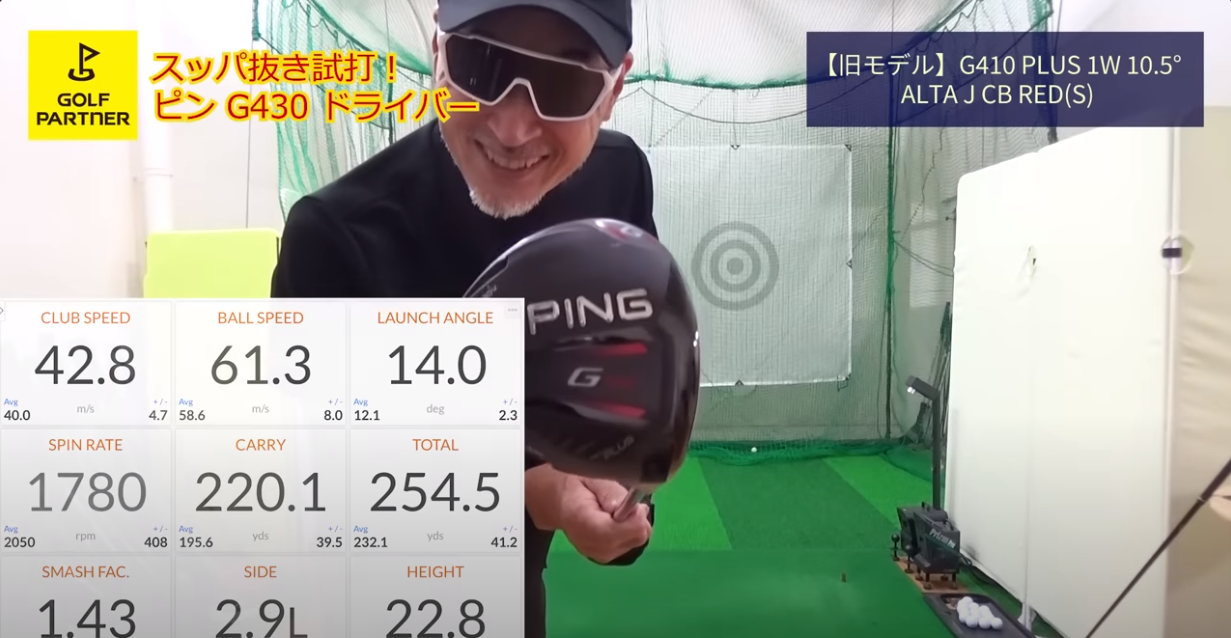Introduction to the Ping G430 Series
The Ping G430 series has been generating a buzz in the golfing world, and for good reason. Boasting a lineage of success with amateur and professional players alike, these drivers promise to deliver top-tier performance and innovation.
Model Overview
The Ping G430 series comprises three distinct models, each with its own unique features tailored to different playing styles.
-
G430 MAX: This model stands out for its standard head size and exceptional forgiveness. It's the preferred choice for golfers seeking consistency and distance off the tee.
-
G430 SFT: Designed with a slight draw bias, the G430 SFT helps golfers combat unwanted slices. Its configuration promotes a square face at impact, resulting in straighter drives and enhanced control.
-
G430 LST: For players looking to reduce spin and achieve a penetrating ball flight, the G430 LST is the ideal option. With its smaller head size and carbon crown, this model offers improved aerodynamics and increased clubhead speed. It is also a model receiving high praise from pro golfers.
Overall, although they can be considered triplets, the MAX and SFT are relatively similar while the LST is a bit more unique in it's own right.
Upon hearing news about the release of the new G430 series, I was expecting the clubs to be similar to the G425 with minor changes, but was shocked at the results. The differences are so great and I would like to share my experience findings.
First Impression For MAX and SFT
To start, we will take a look at the MAX and SFT. Both have the moveable weight, but for the SFT which catches the ball very well, you can adjust the degree of how well it catches the ball.
The new Air resistance part at the top of the club head has a slightly larger protrusion and has become more matte. The top also has a look that slightly resembles carbon fiber, but is made of titanium.
The MAX, has the ALTA J CB Black Shaft, the standard of the bunch. It is a shaft that is compatible with many clubs and is a great fit for those with a head speed of up to 43. The shaft's placement of logos allows full concentration and is very conscious of overall coordination.
Now let's take a test swing!
Although hitting lightly, it's already making a lot of noise. It's a very mild sound that wraps around the ball very nicely.
Very responsive.
If you are comparing the 425 models to this, it's like night and day! It's very responsive and although the names are close, this G430 feels like a completely different model.
Now for the SFT! At address, when compared to the MAX, it looks like it will catch the ball better (only slightly). I wouldn't go as far as calling it a hook face, but it has a slight angle. The weight in the back can be adjusted to two different positions, to help improve the catch.
Let's try it out.
It catches the ball very well. In my opinion, it catches about 10 yards more when compared to the MAX. Rather than being a club draw hitters would use, it feels like a club more suitable for golfers whose shots are drifting a little to the right. At address, it gives you the confidence that you won't drift to the right.
For those wondering what shaft they should use when looking for a G430 SFT, we would recommend first trying the SR shaft. It seems to be the base model of the shafts (for the SFT) and would be enough for the average golfer as well as those trying to catch the ball a bit more.
First Impression Of The LST
Now onto the G430 LST.
For this test, we have been sent two different shaft types for the LST. These genuine shafts have specifications that allow you to hit a low trajectory.
LST with 2.0 Chrome:
It's a little stiffer than the JCB and the head size is different. Now a test swing:
There's not much spin and it's going to the right! The 2.0 Chrome shaft feels more than one flex ratings worth stiffer than the JCB!
LST with 2.0 Black:
Personally, I would like to try hitting the 2.0 Black which is less stiff than the chrome. When waggling, for a genuine shaft, it feels pretty solid and comparable to third party shafts (almost like a Ventus shaft). For someone my age, this setup is over-spec'd (I would recommend this for people with a head speed over 42-43).
Now for a shot:
When compared to the Silver, the top part of the shaft closer to the grip feels more flexible while the bottom end of the shaft closer to the head is stiff, allowing someone like me with a head speed of 42 to hit it. Although I'm able to hit and swing for results, the club is best for those with a head speed of 44-47.
With 3 different club heads and 3 different shafts, there are plenty of options to choose from. Customizing to your liking or "fitting" seems to be a great asset with the PING G430 series (Did you know that the word fitting was first used by PING?).
After putting the Ping G430 series through its paces, here are my key takeaways:
-
Performance: Across all three models, the Ping G430 series delivers outstanding performance on the course. The drivers excel in terms of ball speed, forgiveness, and accuracy, making them reliable tools for golfers of all skill levels.
-
Design: The redesigned clubheads feature advanced aerodynamics, optimizing airflow for maximum efficiency. Additionally, the incorporation of carbon crowns in select models reduces weight and enhances stability, resulting in improved overall performance.
-
Shaft Options: Ping offers a range of shaft options to suit various swing speeds and preferences. From the standard Alta JCB shaft to specialized options like the ASR and LST shafts, golfers have ample choices to customize their equipment for optimal performance.
Comparison to it's predecessor
PING G410 PLUS
The G430 equivalent would be the PING G410 PLUS and as the swing craftsman, we have to compare the two! **The G410 is a personal favorite and suis me very well.
When looking down at the club head at address, although they are the same size, the PING g410 PLUS's head does like a tad bit bigger due to the colorway of the club. The PING G430's color is jet black, giving the illusion of a more compact look.
Let's test it!
It flies! As it is metallic, it has a flashier sound that you can hear clearly. It's also worth to note that the prices of used G410s have not decreased in comparison to the G425 and that there are more inquiries related to the G410! For those looking for the best cost/performance club of the PING driver lineup, the G410 is without question, the best option.
G425 MAX
The color when compared to the G410 has changed a little with a grayish appearance, but the shaft flex and bend is the same. This may just be a personal feeling or opinion, but the G410 head feels slightly heavier than the 410, giving a heavier feeling at the tip.
Those who prefer a hefty head, or for those who don't care too much about the sound the face makes at impact, will like the G425. The adjustable weight is also a great customization offering, but it's hard to choose between the G425 and G410.
Conclusion
In conclusion, the Ping G430 series offers golfers a compelling blend of innovation, performance, and value. With advancements that border on a full model change, these drivers excel in delivering straighter shots, a satisfying feel, and exceptional cost-effectiveness.
The G430 MAX, G430 SFT, and G430 LST each cater to specific player preferences and swing characteristics, providing options for golfers seeking forgiveness, draw bias, or low spin. Furthermore, the range of shaft options ensures that every player can find the perfect match for their game.
Having tested all three models and compared them to their predecessors, I can confidently say that the Ping G430 series represents a significant step forward in driver technology. Whether you're a loyal Ping enthusiast or new to the brand, these drivers offer undeniable benefits that can enhance your performance on the course.









